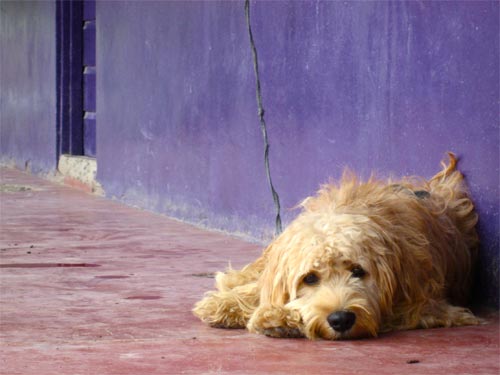
Disclaimer: this is not my feijão. Image source
When Christian and I got married, one of our friends – upon hearing that I’m learning how to cook – asked if I could at least make a “basic” feijão, as though this was a prerequisite for being a good wife to a Brazilian husband. The assumption isn’t surprising – feijão is essential to the Brazilian household; I remember seeing a survey showing that around 98% of Brazilians eat feijão every day.
Guess Christian took a leap of faith in marrying me – although I’ve always eaten feijão, I was clueless about making it, and plus, I’m afraid of the pressure cooker. It always looks like it’s about to explode. Christian informs me that it CAN explode if it’s not closed properly.
Six weeks later, although I’m by no means a feijão expert, I’ve at least learned the basics. Here’s the recipe I’ve learned from Christian. There are no exact amounts – sorry! Whenever I (with my chemist’s brain) try to pin down exact amounts, my husband insists that cooking isn’t an exact science.
Ingredients
-

Charque or carne seca. Image source
Black or pinto beans
- Charque (also known as carne seca) – dried, salted beef
- Calabresa (a type of spiced sausage)
- Tomato, onion, garlic, cilantro
- Optional: Beets, squash, ginger, carrots, green or red pepper, and whatever other vegetables and/or seasonings you might want to hide in your feijão
Directions
- The day before, pick over the beans and get rid of any stones or bad beans, then soak them in water overnight. This helps get rid of the gases. You also might want to soak the charque to get rid of some of the salt.
- Drain the beans, then add more water as well as the charque cut into bite-sized cubes. Cook them in the pressure cooker under pressure for about 15 minutes.
- In the meantime, dice the tomato, onion, garlic, cilantro, and any other veggies and blend them in the blender with a little bit of oil and some water.
- After the beans/charque have cooked for 15 minutes, they should be about halfway done. Add the blended veggies, a couple bay leaves, and the sliced calabresa, and cook under pressure for about 20-30 more minutes.
- When the beans are done (they should be soft), taste the sauce of the feijão to see if it needs any salt. If you’ve made it with meat, it probably won’t, since the charque contributes quite a bit of salt. If you’ve made vegetarian feijão, then add salt to taste.


